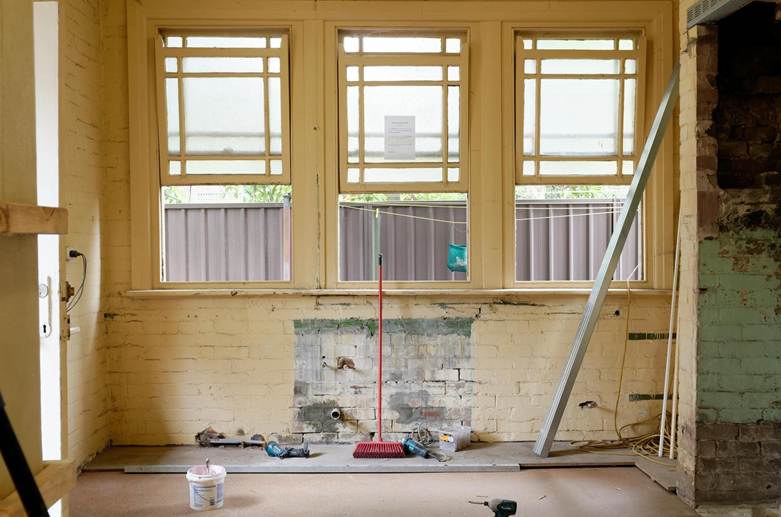Property recovery projects can be complex, time-consuming, and emotionally draining when damage occurs after natural disasters, fires, or major accidents. These projects require more than just rebuilding; they demand strategic planning, financial awareness, and collaboration among professionals.
Property owners often face unexpected hurdles that can delay recovery or increase costs if not managed properly. Understanding the most common challenges in property recovery helps individuals and businesses anticipate potential problems and take proactive steps to achieve successful restoration.

Assessing the Extent of Damage
The first major challenge in any property recovery project lies in determining the full scope of damage. For properties affected by flooding or leaks, engaging professional water damage cleanup and repair services in the early stages is crucial to prevent hidden issues such as mold growth or weakened structural elements. Surface inspections often fail to reveal damage behind walls, under floors, or within ceilings, which can lead to inaccurate repair plans and unexpected costs.
A thorough evaluation by certified inspectors or restoration specialists ensures that all areas needing attention are identified, allowing property owners to develop an effective, safe, and comprehensive recovery strategy. Early detection can save time, reduce expenses, and limit long-term damage to the property.
Navigating Insurance Claims
Dealing with insurance companies is another significant obstacle for property owners. Understanding policy coverage, exclusions, and claim requirements often proves difficult during an already stressful time. Documentation errors or incomplete evidence can delay settlements or result in underpaid claims.
Many owners struggle to communicate effectively with adjusters, leading to disputes about repair costs or responsibilities. Working with an experienced public adjuster or restoration consultant can help clarify the claim process, provide proper documentation, and secure fair compensation for the damage sustained.
Managing Project Costs and Budgets
Keeping property recovery costs under control is a recurring issue in most projects. Initial repair estimates rarely match the final total once unforeseen issues emerge. Rising material prices, labor shortages, and changes in construction standards can further strain budgets.
Without clear cost tracking and contingency planning, owners may run out of funds before completion. Creating a realistic budget that includes an emergency buffer and reviewing expenses regularly are important steps for maintaining financial stability throughout the recovery period.
Dealing with Permits and Regulations
Regulatory compliance presents another challenge when rebuilding in areas with strict zoning or environmental laws. Obtaining the necessary permits can be time-consuming, and requirements often vary by location. Property owners may face unexpected delays if they overlook local building codes or fail to coordinate with municipal authorities.
Hiring a contractor familiar with regional regulations can prevent setbacks and ensure that all reconstruction work meets legal and safety standards. Proper documentation and adherence to regulations speed up the process and protect the property from future legal complications.
Coordinating Contractors and Timelines
Successful property recovery relies heavily on effective coordination among multiple contractors, suppliers, and inspectors. Miscommunication or scheduling conflicts can easily disrupt project timelines. When one task is delayed, it often creates a chain reaction that affects subsequent stages of restoration.
Establishing a clear project plan, assigning responsibilities, and maintaining regular communication among all involved parties help keep work on track. A dedicated project manager or general contractor can provide structure and accountability, ensuring that milestones are met without unnecessary interruptions.
Addressing Structural and Safety Concerns
Many recovery projects involve addressing deep structural issues that pose potential safety hazards. Damaged foundations, weakened walls, or compromised electrical systems can make a property unsafe for workers and future occupants. Rushing through this phase increases the risk of long-term instability or the need for additional repairs later.
It is critical to prioritize safety assessments and engage qualified engineers to design reliable solutions before reconstruction proceeds. Repairing damage properly from the foundation up ensures lasting stability and compliance with safety standards.
Handling Emotional and Psychological Strain
Property recovery can be emotionally challenging for homeowners and business operators. The stress of losing possessions, dealing with insurers, and managing lengthy repairs often takes a mental toll. The uncertainty surrounding timelines and costs adds to this strain.
Recognizing the emotional component of property recovery is important, as it affects decision-making and project efficiency. Seeking professional support, whether through counseling or peer groups, can help individuals manage stress and stay focused throughout the recovery process. Maintaining a sense of progress, even through small milestones, motivates one to move forward.
Mitigating Future Risks
A key part of property recovery is taking steps to reduce the likelihood of future damage. Many owners focus solely on immediate repairs, neglecting preventive measures that could make their property more resilient. Implementing stronger materials, better drainage systems, fire-resistant structures, or upgraded electrical components helps minimize risk.
Working with experts to identify potential vulnerabilities ensures that restored properties are improved. Turning recovery into an opportunity for long-term resilience gives owners confidence that their investment is better protected against future disasters.
Balancing Speed and Quality
In the rush to return a property to normal use, many recovery projects fall into the trap of prioritizing speed over quality. Fast fixes may seem appealing in the short term, but they often lead to structural issues or aesthetic problems later. Balancing the urgency of completion with the need for durable workmanship is a challenge every owner faces.
Establishing realistic timelines and holding contractors accountable for quality standards prevents costly rework and dissatisfaction. A well-planned recovery that values precision and durability provides greater peace of mind than one focused solely on speed.
Overcoming Communication Breakdowns
Clear communication is crucial to any recovery effort, but it is frequently overlooked. Misunderstandings between property owners, insurance representatives, and contractors can lead to errors, delays, or financial losses. Many problems arise when expectations are not properly documented or when updates are inconsistent.
Implementing regular meetings, progress reports, and written agreements ensures transparency and helps all parties stay aligned. Effective communication builds trust, reduces conflict, and fosters a smoother recovery experience from start to finish.

Property recovery projects require patience, planning, and collaboration across multiple fronts. From navigating insurance challenges to maintaining emotional resilience, every stage demands careful attention and sound decision-making. By recognizing the common obstacles that arise, property owners can prepare strategies to address them before they escalate.
Partnering with reliable professionals, maintaining open communication, and focusing on quality and safety contribute to smoother, more successful recoveries. Each challenge presents an opportunity to rebuild stronger, ensuring that the restored property stands as a testament to persistence and thoughtful restoration.









